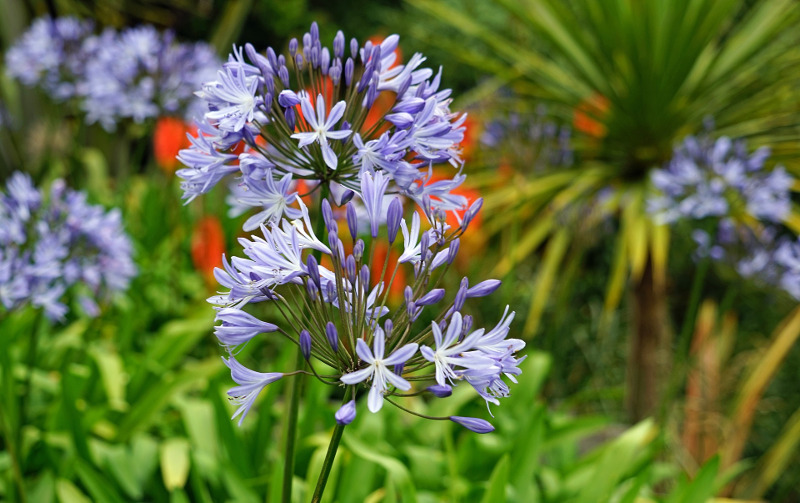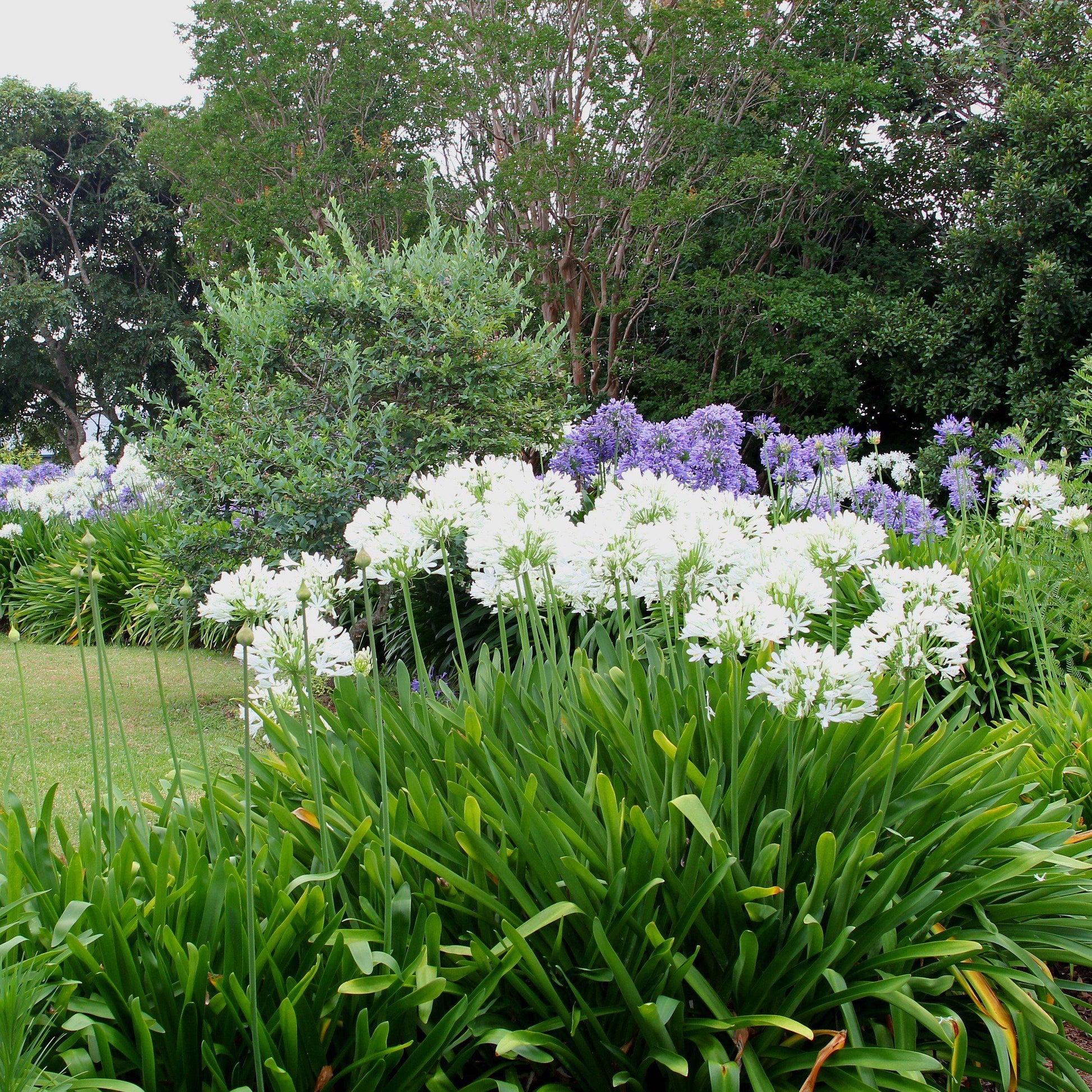Letting Loose the Secret to Effective Agapanthus Growing: Tips and Tricks for a Flourishing Garden
In the world of horticulture, growing agapanthus successfully requires a tactical technique that includes various aspects of plant treatment. By understanding the nuances of agapanthus farming, one can create a setting where these plants thrive and grow abundantly.
Planting Agapanthus: Finest Practices
When growing Agapanthus, proper soil preparation is important for ensuring successful development and growth of these attractive blossoms. Agapanthus, commonly called Lily of the Nile or African lily, flourishes in well-draining soil with a slightly acidic to neutral pH degree - Agapanthus. Before planting, it is crucial to modify hefty clay soils with raw material such as compost or peat moss to enhance drain and supply vital nutrients for the plants
To grow Agapanthus, choose a place that gets full sunlight to partial color, as this will certainly advertise healthy and balanced development and abundant blooming. Dig an opening twice the diameter of the plant's origin round and position the Agapanthus at the very same deepness it was previously growing. Gently backfill the hole with soil, weighing down securely to eliminate any air pockets around the roots.
Water the freshly grown Agapanthus extensively and remain to maintain the soil uniformly damp, particularly during the plant's active expanding period. Agapanthus. Applying a balanced plant food once a month can better sustain the plant's growth and flowering. By following these ideal methods for planting Agapanthus, you can create a stunning display of these exciting flowers in your garden
Ideal Soil Conditions for Agapanthus
For optimal development and flowering success of Agapanthus plants, guaranteeing the soil problems are ideal is vital. Agapanthus favors soil that is abundant in nutrients, so including a balanced plant food during the growing period can promote healthy growth and lively blooms.

Watering and Feeding Tips
To ensure healthy development and lively blooms, proper watering and feeding methods are vital for successful Agapanthus cultivation. Agapanthus plants profit from routine watering, especially during the expanding period.
When it concerns fertilizing Agapanthus, a well balanced plant food with equal components nitrogen, phosphorus, and potassium can be applied in the spring to advertise healthy and balanced growth and flowering. Slow-release plant foods are excellent for giving nutrients progressively over an extensive duration. Prevent over-fertilizing, as this can lead to too much pop over to these guys foliage development at the cost of blossoms.
Furthermore, incorporating raw material like garden compost into the dirt can enhance nutrient degrees and boost soil framework, helping in the overall health and wellness of the Agapanthus plants. By following these watering and fertilizing ideas, gardeners can ensure their Agapanthus plants prosper and produce magnificent screens of flowers.
Trimming and Deadheading Techniques
Correct pruning and deadheading methods play a critical function in maintaining the health and wellness and visual appeals of Agapanthus plants, enhancing the vital practices of watering and fertilizing for effective farming. Pruning Agapanthus includes eliminating invested blossom heads, dead or yellowing fallen leaves, and total shaping of the plant to advertise far better growth. Deadheading, the process of eliminating discolored blossoms, not only boosts the plant's look but additionally urges additional flowering.
When deadheading Agapanthus, it is recommended to clip off the blossom stem at the base making use of sharp, clean shears. This procedure reroutes the plant's power from seed production back into origin and vegetation growth, advertising a much healthier and extra durable plant. Routine deadheading can prolong the growing period of Agapanthus and stop self-seeding, which can bring about overcrowding.
In terms of pruning, Agapanthus normally gain from a light trim after blooming to clean up the plant and encourage fresh growth. Cutting back the spent blossom stems and getting rid of any type of broken or dead vegetation aids preserve the plant's vigor and total appearance. Nevertheless, it is important to avoid cutting right into the crown of the plant, as this can deteriorate its wellness.

Protecting Agapanthus From Pests and Diseases
Applying reliable insect and condition monitoring methods is crucial to securing the health and wellness and vigor of Agapanthus plants in growing. One usual pest that affects Agapanthus is the Agapanthus borer, a caterpillar that passages into the plant, causing damages to the leaves and web blossoms.
In addition to bugs, Agapanthus are prone to conditions such as root rot and fungal leaf areas. By remaining watchful and attending to pest and disease concerns immediately, garden enthusiasts can help their Agapanthus prosper and thrive.

Final Thought
In verdict, successful farming of agapanthus calls for correct planting strategies, optimal soil problems, sufficient watering and fertilizing, regular pruning and deadheading, and protection from diseases and pests. By adhering to these techniques and ideas, garden enthusiasts can make sure a growing garden full of attractive agapanthus flowers. Agapanthus. Bear in mind to keep regular care and interest to information to advertise the health and wellness and durability of click to investigate these spectacular plants
When planting Agapanthus, proper soil preparation is important for making certain effective development and advancement of these gorgeous flowers.Water the freshly grown Agapanthus completely and proceed to maintain the dirt uniformly moist, especially throughout the plant's active expanding period.For optimal growth and flowering success of Agapanthus plants, ensuring the soil problems are excellent is essential. When growing or hair transplanting Agapanthus, ensure the soil is well-prepared to supply the needed structure for the plants to develop themselves successfully. One usual insect that affects Agapanthus is the Agapanthus borer, a caterpillar that passages into the plant, creating damage to the fallen leaves and blossoms.